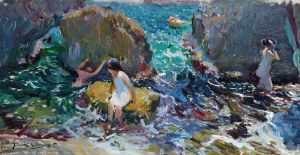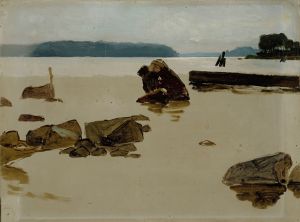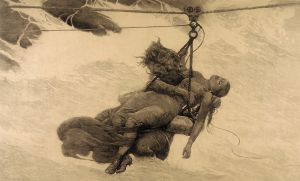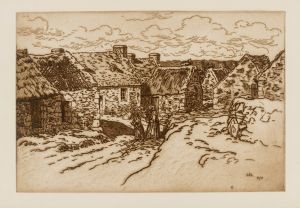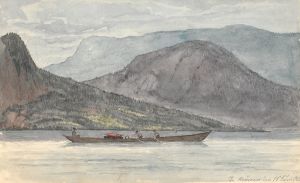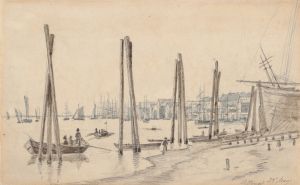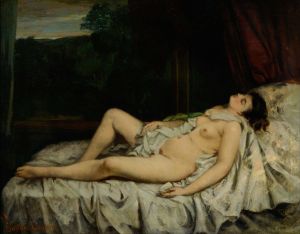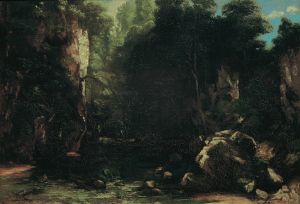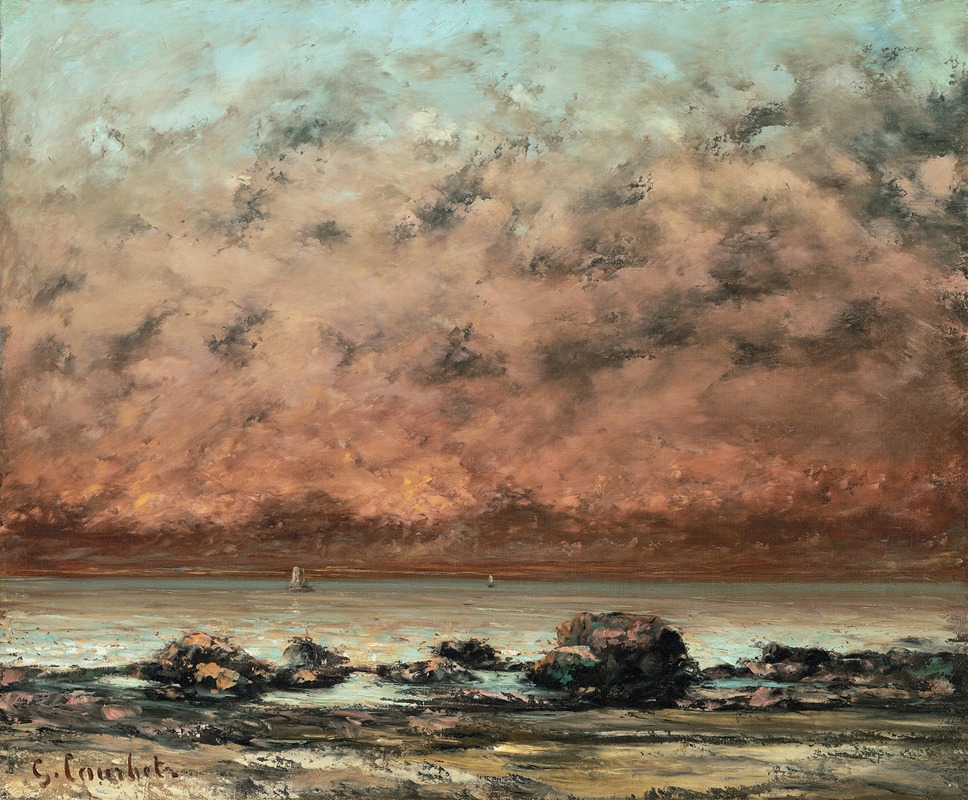
The Black Rocks at Trouville
A hand-painted replica of Gustave Courbet’s masterpiece The Black Rocks at Trouville, meticulously crafted by professional artists to capture the true essence of the original. Each piece is created with museum-quality canvas and rare mineral pigments, carefully painted by experienced artists with delicate brushstrokes and rich, layered colors to perfectly recreate the texture of the original artwork. Unlike machine-printed reproductions, this hand-painted version brings the painting to life, infused with the artist’s emotions and skill in every stroke. Whether for personal collection or home decoration, it instantly elevates the artistic atmosphere of any space.
"The Black Rocks at Trouville" is an oil painting created by the French artist Gustave Courbet in 1865. Courbet, a leading figure in the Realist movement, is known for his commitment to depicting everyday scenes and landscapes with a focus on naturalism and a rejection of the idealized subjects that dominated the art world at the time.
This particular painting captures the rugged coastline of Trouville-sur-Mer, a seaside town in the Normandy region of France. Trouville was a popular destination for artists and tourists alike during the 19th century, known for its picturesque scenery and vibrant social life. Courbet's choice to paint this location reflects his interest in capturing the raw beauty of nature.
"The Black Rocks at Trouville" is characterized by its dramatic depiction of the rocky shoreline. Courbet's use of a dark, earthy palette emphasizes the solidity and texture of the rocks, contrasting sharply with the lighter tones of the sky and sea. The composition is dominated by the imposing presence of the rocks, which occupy the majority of the canvas and create a sense of grandeur and permanence.
Courbet's technique in this painting is notable for its bold, expressive brushwork. He applies the paint thickly, using a palette knife to create a tactile surface that enhances the realism of the scene. This method allows him to convey the roughness of the rocks and the movement of the waves with a sense of immediacy and vitality.
The painting also reflects Courbet's interest in the interplay between light and shadow. The way he captures the light hitting the rocks and the water adds depth and dimension to the scene, creating a dynamic and immersive experience for the viewer. The sky, with its subtle gradations of color, suggests a time of day when the light is soft and diffused, further enhancing the naturalistic quality of the work.
"The Black Rocks at Trouville" is a testament to Courbet's skill as a landscape painter and his dedication to portraying the natural world with honesty and intensity. It exemplifies the principles of the Realist movement, which sought to depict subjects truthfully and without idealization. Courbet's focus on the raw, unembellished beauty of the natural environment challenges the viewer to appreciate the inherent value and majesty of the everyday world.
Today, "The Black Rocks at Trouville" is recognized as an important work within Courbet's oeuvre and within the broader context of 19th-century art. It continues to be admired for its technical mastery and its powerful representation of the natural landscape. The painting is housed in the Musée d'Orsay in Paris, where it remains accessible to the public and serves as an enduring example of Courbet's artistic vision and contribution to the Realist movement.





